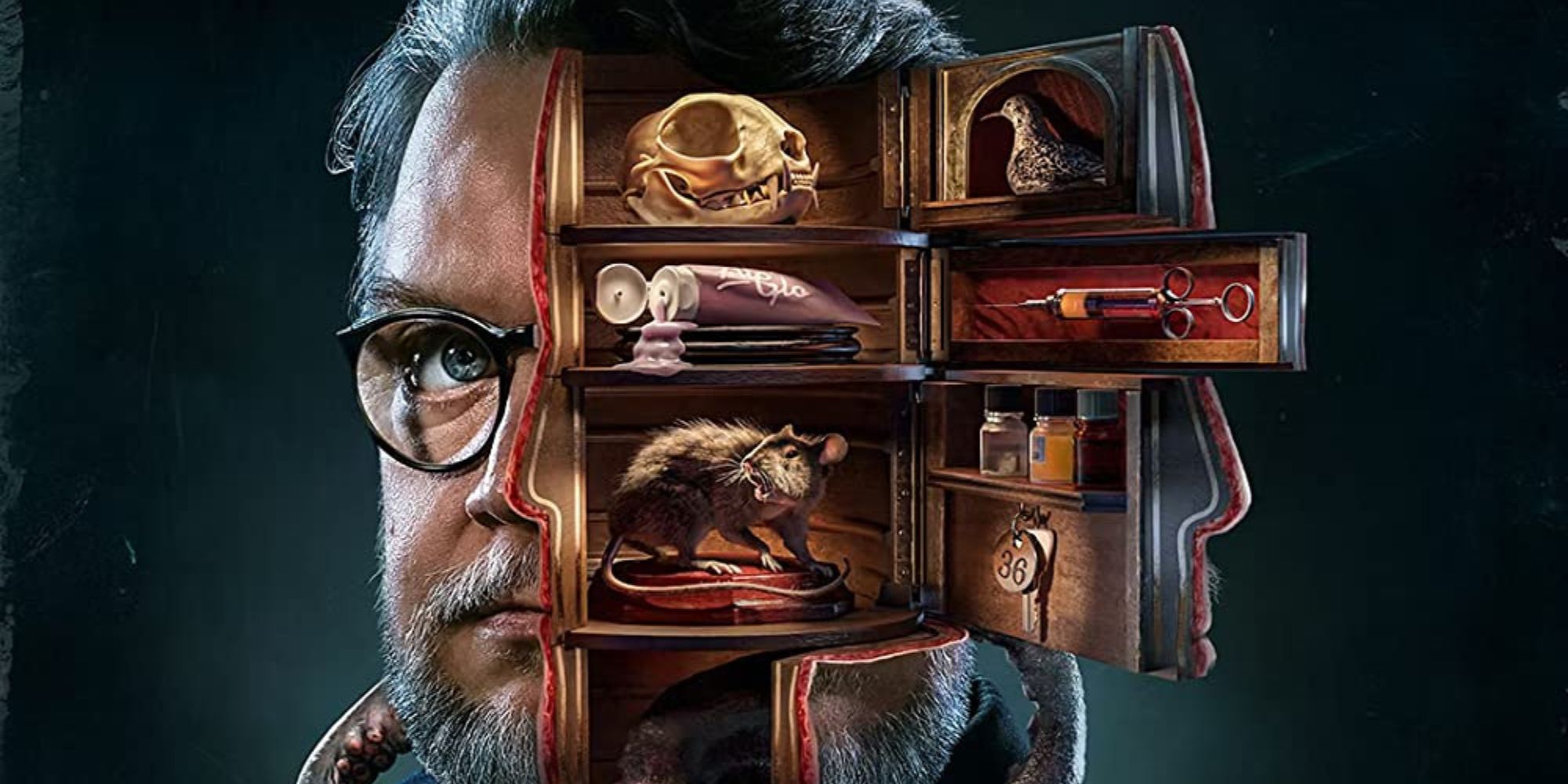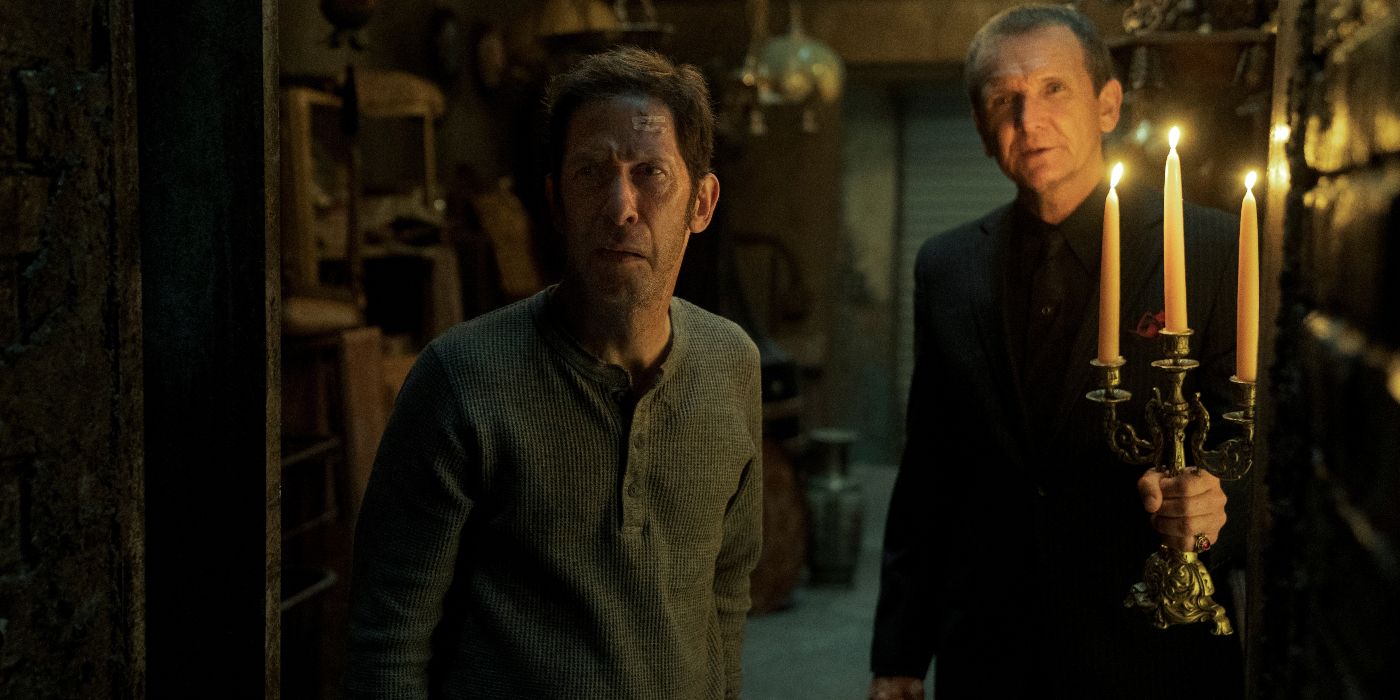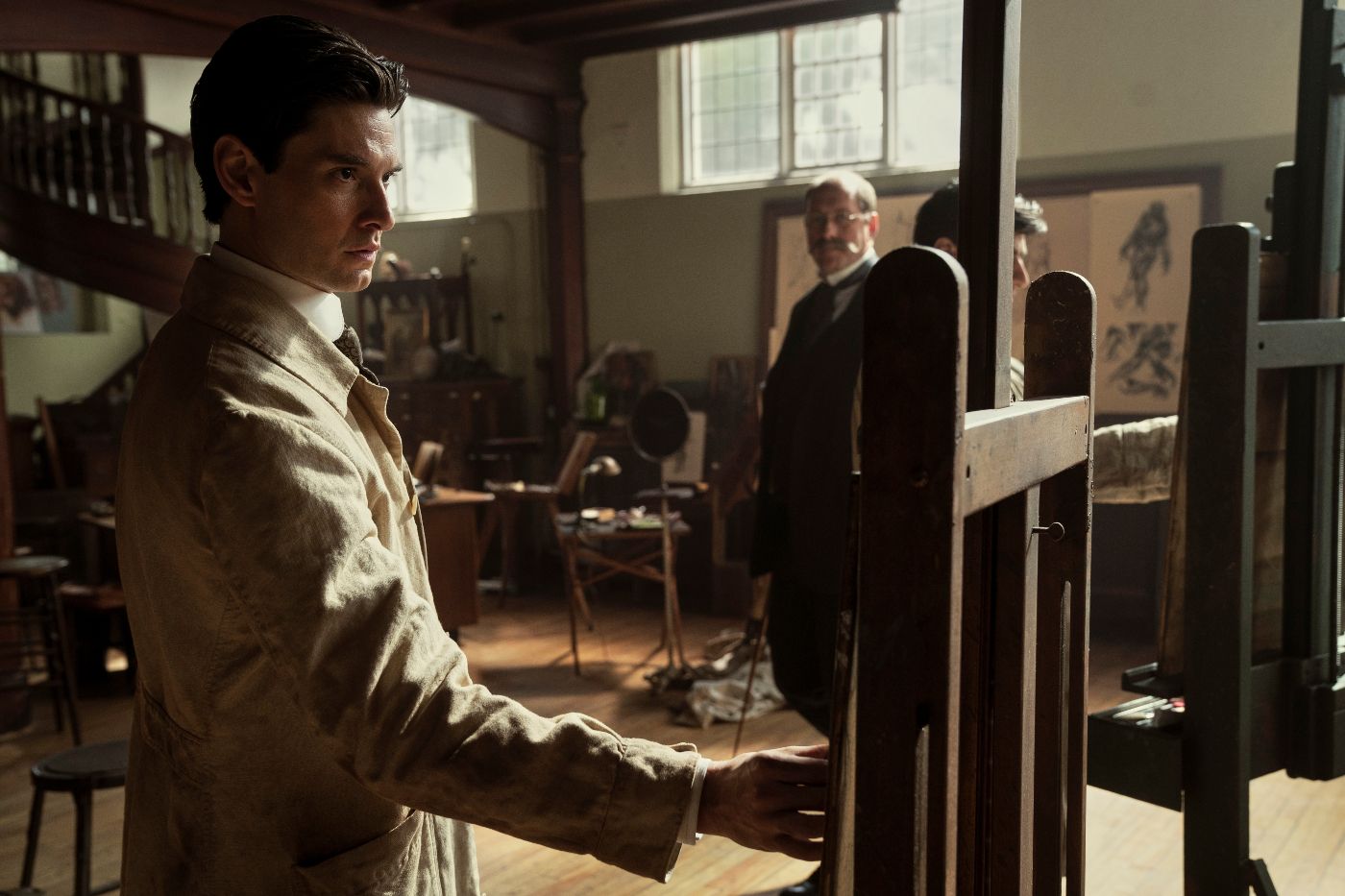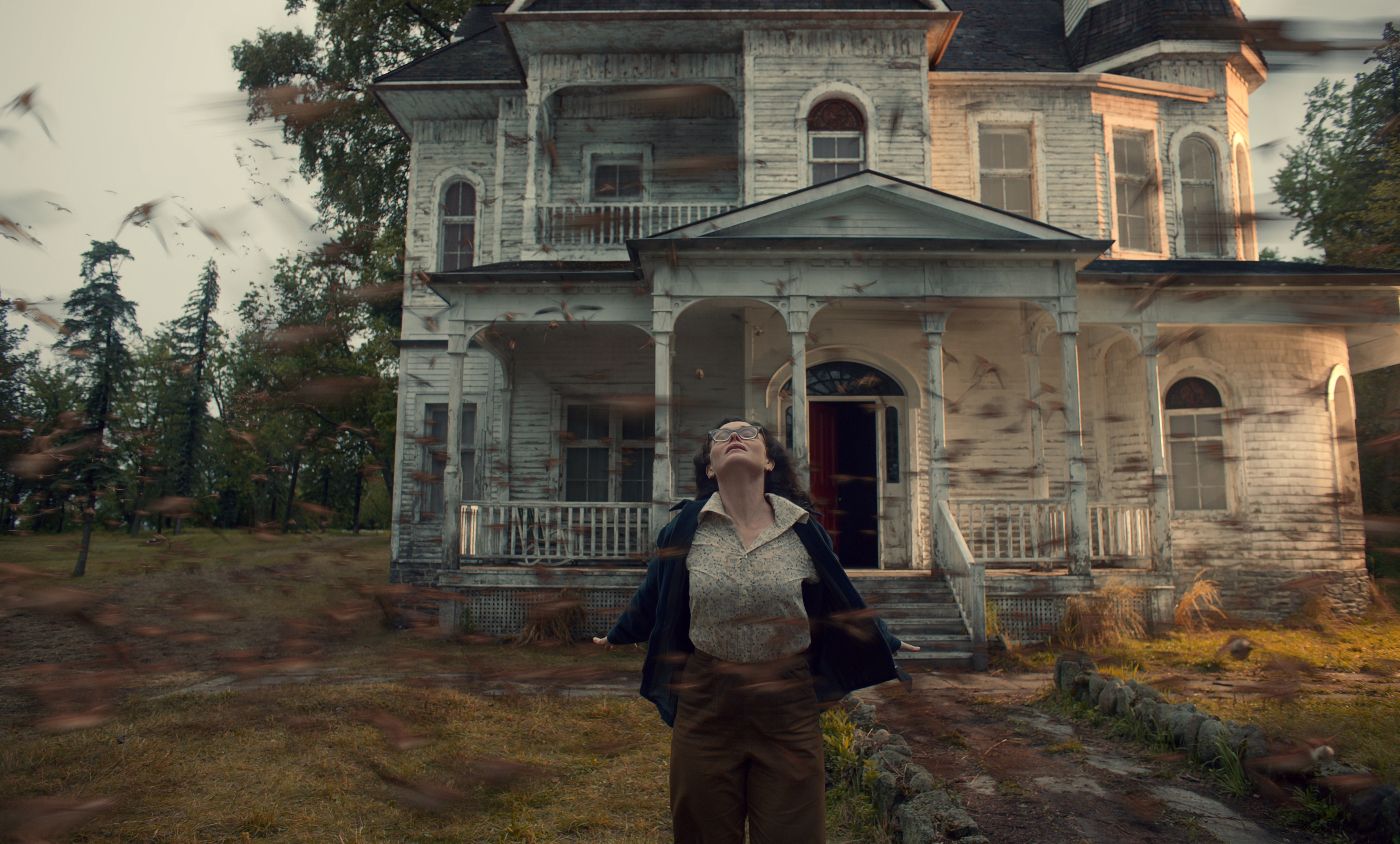The feeling that I get when I watch Guillermo del Toro's Cabinet of Curiosities is that this is a series that feels like it speaks to the curator specifically. Del Toro's series is created, presented, and partly written by him, and it shows. His stories speak to our inherent curiosity about the nature of things. Each entry of the season looks at not only a curiosity in his literal cabinet but the inquisitive and searching nature of its characters. While the eight-episode season has no connecting theme overly and each story can be watched on its own, they can't help but feel related, if distantly and twice removed sometimes.
When announced, the series boasted a slew of horror familiars and/or del Toro collaborators as directors. Del Toro's frequent cinematographer (also known for his work with Robert Rodriguez) Guillermo Navarro directs the story from del Toro himself, with the script co-written by del Toro and Regina Corrado. "Lot 36" kicks the series off by mixing modern horror, full of contemporary themes, with that of the supernatural and occult. The following episodes bring in familiar directors like Vincenzo Natali (Cube, Splice), Ana Lily Amirpour (A Girl Walks Home Alone at Night), Panos Cosmatos (Mandy), and Jennifer Kent (The Babadook). It also offers newer directors or directors who don't normally dabble in horror.
Each episode offers a new flavor of horror, whether it's body horror, Lovecraftian, or dystopian. While some utilize their concepts to sheer perfection, others stumble a bit in the execution, though none are boring. The wide range of styles and stories means not every episode from Cabinet of Curiosities will hit the same for audience members. With a star-studded cast of actors, the series definitely has the power to pull off some masterful performances.
In many ways, horror is effective because there is always an element of mystery. Each story in Cabinet of Curiosities starts off in The Twilight Zone fashion, with Del Toro introducing the concept vaguely as a lure, showing you a distinct item from the episode that is there to pique your interest. The story that then unfolds is often one about discovering the truth. Whether it's the truth of what is in an old storage container, what happens to someone after death, or what can finally rid you of your insecurities, a question lingers above the heads of each of the protagonists, and it's one that is answered as the story plays out.
Although the series was presented with references to Lovecraft and images of period-piece stories, only half of the season is set in a period horror environment. "Graveyard Rats," "The Autopsy," "Pickman's Model," and "Dreams in the Witch House" exist in a costumed past, while "Lot 36," "The Outside," "The Viewing," and "The Murmuring" lean more to a modern setting. The mix of time periods is a strong visual reminder at the beginning of the episode of a shift in tone and story — and while some pieces instill feelings of dread or leave you unsettled, others are quite emotional.
While it's clear that the quality of storytelling in Cabinet of Curiosities feels sophisticated, with its talented cast and extravagant production design, some episodes end up falling short. Directed by Catherine Hardwicke, "Dreams in the Witch House" lacks the punch of other works. The story is rather disjointed as it tells of a man (Rupert Grint) who seeks the help of the occult to find the spirit of his dead twin sister. Although the story is based on a Lovecraft short story of the same name, it is not much like the original story and falters both in scares and in telling a clear narrative. At its worst, the weakest entry of the bunch can just come off as boring. Similarly, "The Viewing" by Panos Cosmatos, while visually stunning and boasting cast like Peter Weller, Eric André, and Sofia Boutella, feels incomplete. There are no explanations, just surreal situation after surreal situation, only becoming a horror movie towards its very end and doing so sloppily — though "The Viewing" is undoubtedly one of the most visually dissimilar from the rest of the series.
Of the more period horrors, "Pickman's Model" stands out for its willingness to lean into the horrific. Ben Barnes and Crispin Glover play an odd couple pair of art students, though one has a dark talent for art that will haunt the other for his entire life. The imagery and paintings seen in the episode are both arresting and grotesque, a perfect combination for another Lovecraftian tale, and Barnes' descent from a charming artist to a paranoid man haunted by visions given to him by the sinister Glover is delightful to watch. "The Autopsy" is a slow-burn mystery, directed by David Prior. While it starts slow, F. Murray Abraham delivers a thrilling performance as a pathologist trying to understand a string of mysterious deaths. By the final shot, it wraps up with ease after laying so much groundwork.
"The Outside" by Ana Lily Amirpour is set in suburbia, probably somewhere around the late 80s, and is a story about the most deep-seated insecurities that women face. The need of belonging, the fear of being perceived as ugly or odd, the desire for confidence and charisma — it's all embodied in the main character played by Kate Micucci, a soft-spoken woman who loves taxidermy and is plagued at work by a group of vain and vapid chatty Cathys. The mix of body horror, a bizarre and hilarious appearance from Dan Stevens, and the overall tragedy of Micucci's character's slow downward spiral makes "The Outside" one of the most memorable entries as well as one of its strongest.
But on top of all of that stands Jennifer Kent's masterpiece, "The Murmuring." Based on a story by del Toro, it seems that Kent and del Toro's storytelling is a match made in heaven as we're thrown into the world of bird watchers. Essie Davis and Andrew Lincoln play a couple who love birds and, more importantly, have a deep love for each other. The chemistry between these two actors is palpable and becomes painful when it is clear that there is a rift between husband and wife. Kent employs her stylistic camera work in a way that feels intimate and quiet, showing us the emotion between the two characters as well as what is keeping them apart. On the horror front, Kent is equally skilled in delivering scares and a devastating story that is likely to leave you in tears (as it did for me). As the best entry in the series, it's clear that Kent is more than just The Babadook, and her ability to mix the multiple elements of a story to create something that delivers emotional gut punches after bone-chilling frights are her ultimate trademark.
All in all, Cabinet of Curiosities works because it's just that: A grab bag of different stories, linked together tenuously by del Toro. We never linger too long in one place, and horror benefits from the shadows that it can hide in. Given how entertaining these eight episodes are, I'm eager to take a peak back into the cabinet and see what other stories are hidden in the nooks and crannies.
Rating: B+
Guillermo del Toro's Cabinet of Curiosities premieres October 25 on Netflix, with two episodes released each day through October 28.




